1.Builder Updates
1A. Roy Farris (Kit #13) – For Sale.
1B. Chuck Westcott (Kit #12) – First solo flight.
1C. Bud Tedesco (Kit #16) – Mr. Test Pilot!
1D. Ray Seim (Kit #10) – In The Home Stretch.
1E. Bryan Davies (Kit #7) - Wing's A Home Run – Fuselage On-Deck.
1F. Steve Rogers (Kit #14) – New Engine Oil System.
1G. George Morse (Kit #5) – Still For Sale.
2. CAD Progress - Done with the “First Pass”
3. That &*@#$!% Sheet Metal Brake -
4. New (Home Brew) 8 Foot Press Brake -
5. CNC Plasma to CNC Router -
6. Great Wall of Prowler -
7. Heat Treating of Horizontal Stabilizer Parts -
Let's start with the builder updates,
1.Builder Updates – Here is the latest information from the current builder's:
1A. Roy Farris (Kit #13) – The Economy. Sadly, Roy reports that the economy has downsized his job. He initially thought he'd be forced to put his Prowler up for sale. But, as of our last contact with Roy, he is working on a deal that will allow him to keep his Prowler. Here's a file pic of his airplane:
 1B. Chuck Westcott (Kit #12) – First solo flight. Chuck called a few weeks ago just after his first ever flight in his own Prowler. Until now he has had a “hired hand” doing the test flying of his airplane. He decided that having flown nothing but “Whales” (B747's) for most of his career – it just might not be prudent to jump in his Prowler and do his own test flying. However, after some tail-dragger time in a Citabria he was comfortable enough to take the Prowler out on his own. He reports that the 20 years of work it took to get the plane done was worth it. He was VERY pleased with the airplane. He reports that it is very stable, very responsive, and very fast. Even without a supercharger, right after takeoff his plane was doing nearly 200 knots before he knew it. He reports that the Prowler is very easy to land and very stable throughout the approach. On a follow-on flight he got a low oil quantity indication and made the flight a short one, just to be cautious. But the plane flies great. He is now working to discover where the oil is going.
1B. Chuck Westcott (Kit #12) – First solo flight. Chuck called a few weeks ago just after his first ever flight in his own Prowler. Until now he has had a “hired hand” doing the test flying of his airplane. He decided that having flown nothing but “Whales” (B747's) for most of his career – it just might not be prudent to jump in his Prowler and do his own test flying. However, after some tail-dragger time in a Citabria he was comfortable enough to take the Prowler out on his own. He reports that the 20 years of work it took to get the plane done was worth it. He was VERY pleased with the airplane. He reports that it is very stable, very responsive, and very fast. Even without a supercharger, right after takeoff his plane was doing nearly 200 knots before he knew it. He reports that the Prowler is very easy to land and very stable throughout the approach. On a follow-on flight he got a low oil quantity indication and made the flight a short one, just to be cautious. But the plane flies great. He is now working to discover where the oil is going.In any event, GREAT JOB CHUCK! We are all very happy for you. OK, we're all a little envious too! Thank you for sharing your experience and reporting on your flights.
1C. Bud Tedesco (Kit #16) – Mr. Test Pilot! OK Bud – you're just having too much fun with this test pilot thing! Got an email from Bud recently – and I quote:
”On T/O today, I hauled the nose up to keep the A/S below 100kts until the gear was retracted. Glancing at the A/S, I noted that it read 0 (zero), but we were climbing like a homesick angel. The brilliant deduction was "sum ting wong". By dint of superior airmanship, skill and cunning (otherwise known as blind luck), a successful landing was accomplished. Neither the air vehicle nor its occupant was dented.”
As you may recall, on one of Bud's previous test flights his canopy departed the aircraft (quite a story). Hence, we think that Bud might be taking this test pilot thing a bit too far (kidding). In all seriousness, nice work Bud. Turns out that the dynamic pressure line to his pitot-static system had vibrated to the point of separation at the top of the pitot tube and this caused the loss of airspeed indication. He urges everyone to ensure that their dynamic and static pressure lines are well supported (and damped) to prevent this. Great use of those partial panel skills you learned all those years ago! In addition, Bud reports a few gripes that he is still working to resolve on his airplane. One is a heavy left wing. He has added lead weight to the right wing to counter this (for the time being) until the root cause of this asymmetry can be investigated more fully. Bud has now completed more than 10 hrs of flight testing so his radius of operation has opened up to 75nm (from 25nm). More to follow. Nice work Bud, but next time maybe just report a “nominal” test flight – for something different (;-).
1D. Ray Seim (Kit #10) – In The Home Stretch. Well, the “Master” is still hard at it. Ray has gotten his fairings made, installed, and primed. Check these out! Ray had them hand made by Will, a professional metal smith near Van Nuys Airport. They turned out fantastic:

 He has also been finishing up the myriad of small items that pop up as you get closer to the end of a project in a effort to get ready. I recently visited Ray just after he finished his exhaust stack fairings. By now Ray should be getting deep into the final engine work. He was just waiting for one of the supercharger pulleys to show up with the UPS guy so that he could start the final install of that. Great work Ray!
He has also been finishing up the myriad of small items that pop up as you get closer to the end of a project in a effort to get ready. I recently visited Ray just after he finished his exhaust stack fairings. By now Ray should be getting deep into the final engine work. He was just waiting for one of the supercharger pulleys to show up with the UPS guy so that he could start the final install of that. Great work Ray!1E. Bryan Davies (Kit #7) - The Wing's A Home Run – The Fuselage is On-Deck. Bryan has been moving right along on his airplane. He has recently completely finished up his entire wing section (center and outboard sections). All the systems are installed and tested including the fuel, venting, hydraulic, landing gear, brakes, and associated electrical systems. Here's an earlier pic of his wing section:
 Bryan sent me this pic just last week. He has fabricated his fuselage jig and started to place his fuselage formers:
Bryan sent me this pic just last week. He has fabricated his fuselage jig and started to place his fuselage formers:
 Nice work Bryan! You're doing a first rate job of building your Prowler.
Nice work Bryan! You're doing a first rate job of building your Prowler.1F. Steve Rogers (Kit #14) – New Engine Oil System. Our most recent email from Steve says that he is in the process of re-designing much of the engine oil system of his Prowler. He is creating a new lower cowl piece that includes a chin inlet and a new diffuser. It will hold a new style oil cooler and incorporate exit ducts. He is also switching to a complete scavenging system with three scavenging pumps and an air/oil separating tank, as well as a remote oil filter mount with a built-in temp sensor port and a pressure port that he will use as a source to lubricate the supercharger. Here's a couple of pics:

 Here's a pic of Steve's airplane:
Here's a pic of Steve's airplane: Nice work Steve. We hope you get a great system improvement and anxiously await the results of your work.
Nice work Steve. We hope you get a great system improvement and anxiously await the results of your work.1G. George Morse (Kit #5) – Still For Sale. George's airplane is still for sale. George completed the annual late last year and has it in flying condition. There have been a few “lookers” but no serious inquiries to date.
2. CAD Progress – Done with the “First Pass.” We've now completed our first pass through the entire airplane and have at least one CAD drawing of each part of the airplane that we got from George. Since we were sort-of learning as we went along in the CAD drawing process, the work at the beginning was not of the same quality as the recent work completed. So, the “second pass” work has now started. This next pass will help to “standardized” the drawings, correct errors and use more accurate techniques in developing some of the drawings. Here's a 3D pic of the cockpit floor area:

3. That &*@#$!% Sheet Metal Brake - Well, after another three days of tweaks, the 8 ft sheet metal brake project is a success and a failure. Here are some pix straightening the bed:

 Here are some pix straightening the clamp:
Here are some pix straightening the clamp: Here's adding a stiffener to the horizontal part of the clamp:
Here's adding a stiffener to the horizontal part of the clamp: Here's the finished product (in paint):
Here's the finished product (in paint): We've gotten the brake to successfully bend 16 ga. steel sheet. But trying to use the brake to bend 2024-T3 does not give acceptable results. Despite the addition of extra stiffeners and stiff-backs, the stiffness of 2024-T3 just doesn't allow it to be bent well on this sheet metal brake. We decided to give up on the apron type brake and pursue a press type brake.
We've gotten the brake to successfully bend 16 ga. steel sheet. But trying to use the brake to bend 2024-T3 does not give acceptable results. Despite the addition of extra stiffeners and stiff-backs, the stiffness of 2024-T3 just doesn't allow it to be bent well on this sheet metal brake. We decided to give up on the apron type brake and pursue a press type brake.4. New (Home Brew) 8 Foot Press Brake - After some research and homework on press brakes, we decided to give a press brake a try. A commercial unit that will bend 8 ft would be cost and size prohibitive for the current Prowler Aviation. So, we decided to try a “homebrew” solution. Here's the base:
 Here's the basic frame:
Here's the basic frame: Here's the upper die machining:
Here's the upper die machining: Here's upper and lower dies installed in the press:
Here's upper and lower dies installed in the press: You may notice that the brake is currenly powered "manually." This will be replaced with a real hydraulic system eventually. Now that the fabrication of the basic machine is complete, the next steps are to mount a digital plunge measurement system and install a backgauge system. Once these steps are done the test bending can begin. The test bends will calibrate both the plunge depth .vs. bend angle and backgauge system (for specific flange sizes). This machine will be used to bend many of the parts of a Prowler. Eventually, we hope to use it to bend longerons, floor channels, outboard wing spar channels, wing leading edge skins, aft fuselage skins, and many more. We hope that it will become the new Prowler "multi-tool."
You may notice that the brake is currenly powered "manually." This will be replaced with a real hydraulic system eventually. Now that the fabrication of the basic machine is complete, the next steps are to mount a digital plunge measurement system and install a backgauge system. Once these steps are done the test bending can begin. The test bends will calibrate both the plunge depth .vs. bend angle and backgauge system (for specific flange sizes). This machine will be used to bend many of the parts of a Prowler. Eventually, we hope to use it to bend longerons, floor channels, outboard wing spar channels, wing leading edge skins, aft fuselage skins, and many more. We hope that it will become the new Prowler "multi-tool."5. CNC Plasma to CNC Router - After spending significant time, energy and money on rebuilding a Torchmate 1 plasma table into a system with CandCNC electronics with a Digital Torch Height Control, we discovered that it cannot be used to cut aircraft aluminum. Turns out that when you use high heat to weld or cut aluminum it creates an area called a heat affected zone (HAZ). What makes 2024-T3 so stiff is the copper that is alloyed into the aluminum. But, in the HAZ, the heat makes the copper come out of solution and form "clumps" that lodge in between the grains of aluminum. This reduces the metals ability to resist corrosion, in particular a corrosion know as "Inter-granular Corrosion."
So, we are now pursuing the purchase or building of a CNC routing system. A CNC router that is at least 4ft x 8ft will allow us to cut out any and all of the Prowler parts. It will also allow us to pursue the process of "match drilling" of part holes. This has the potential to greatly improve the building experience by simplifying assembly process. More to follow.
6. Great Wall of Prowler - It's the time of year again in Northern California that the ground can be worked and the weather is not too hot. So we took advantage of some available time to get the retaining wall completed in front of the shop. It took a little over a week and we completed the wall as far as we've planned to for this year. Because the wall is getting fairly lengthy, we've jokingly coined it the "Great Wall of Prowler". Here are a few shots:


7. Heat Treating of Horizontal Stabilizer Parts -
We've had several parts of the Horz Stab setting on the bench for quite some time now. Mostly, this section of the plane has been waiting on getting 8 parts heat treated from the 2024-O material to the T4 condition. While sitting on-call down in the LA area, we found a company that is seriously all about heat treating aluminum. Newton Heat Treating in City of Industry, CA does an amazing array of functions related to heating and treating aluminum; Plus they're just great folks! Here's the parts that we had treated and a shot of the front of Newton's facilities:

 For now, we'll continue to develop production processes and push toward future production of Prowler kits. The goal for this year is to get the entire wing spar into the wing jig. While this goal may sound fairly simple, the fact is that in order to accomplish this, we will have had to complete and test many production processes. These are the processes that are necessary to make parts that are necessary to make not only the wing spar parts, but also much of the rest of the airplane. So, accomplishing this will help to speed up making parts in the future. That's all for this update. I'll try get back to updating a little more often, as it makes the updates shorter and easier to do.
For now, we'll continue to develop production processes and push toward future production of Prowler kits. The goal for this year is to get the entire wing spar into the wing jig. While this goal may sound fairly simple, the fact is that in order to accomplish this, we will have had to complete and test many production processes. These are the processes that are necessary to make parts that are necessary to make not only the wing spar parts, but also much of the rest of the airplane. So, accomplishing this will help to speed up making parts in the future. That's all for this update. I'll try get back to updating a little more often, as it makes the updates shorter and easier to do.
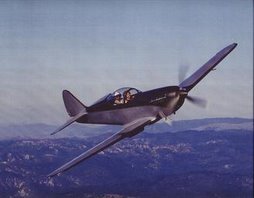
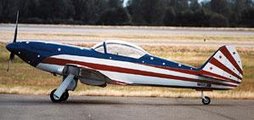
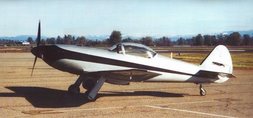
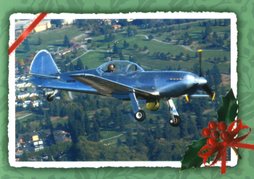
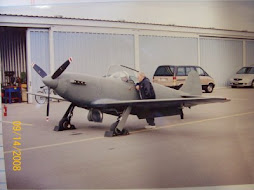
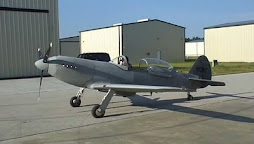

No comments:
Post a Comment